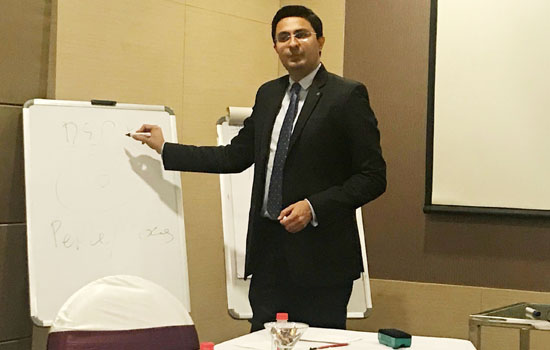Passive Investments Set For Growth
( 20553 बार पढ़ी गयी)
Published on : 07 Jul, 18 11:07
 Udaipur : Passive investments like index funds and ETFs have seen good growth in developed markets and this has been driven by multiple reasons. There is a trend of managers finding it difficult to outperform the benchmark index, prompting investors to shift to lower cost passive funds.
Udaipur : Passive investments like index funds and ETFs have seen good growth in developed markets and this has been driven by multiple reasons. There is a trend of managers finding it difficult to outperform the benchmark index, prompting investors to shift to lower cost passive funds. In India, active management will continue to retain the potential to generate alpha by outperforming the benchmark. However, this is becoming increasingly challenging, especially in the large-cap space. Recent analysis of large-cap performance shows more than 50% of the active funds underperformed the benchmark across 1, 3, 5 and 10 year periods.
While the debate of active versus passive will continue, what Indian investors need is a blend of both. There is need to adopt both styles through a “core and satellite” portfolio management style to mitigate the risk of underperformance. The investor may expect better risk-adjusted returns by having a core portfolio of passive funds that grows in line with the broader market, ensuring index returns, and a satellite portfolio that attempts to generate alpha.
When we launched DSP BlackRock Equal Nifty 50 Fund, our first passive fund, we positioned it as a “complimentary” and not a competing strategy, with the aim to access large-cap equities in an investor’s portfolio.
In India, the mutual fund to GDP ratio is currently in single digits while in markets like the US it exceeds 100 per cent. Here we are still nascent. MF is a push product and there is a huge untapped market. The common man’s interest in ETFs/index funds is just beginning.
In our Equal Nifty 50 NFO, we collected about Rs 150 crore widely spread across about 20,000 investors. This is still nothing in the context of the Rs 90000 crore of overall AUMs that the industry manages. But this Rs 150 crore is one of the largest ever for an index fund in the Indian context.
Passive funds are not expected to eat into market share of active funds is because there is a lot of depth and ground to be covered in terms of mutual fund penetration. Hence, both strategies will co-exist. Active funds would probably become more specialised like the ACE we came up with or some structured portfolio solutions. For plain vanilla equity funds especially in large cap space, passive funds could tend to see more flows. Based on estimates of various global consultants and research firms, it can be predicted that by 2025 passive investments will become approx. 25% of total AUM or about US$ 40 trillion.
© CopyRight Pressnote.in | A Avid Web Solutions Venture.






